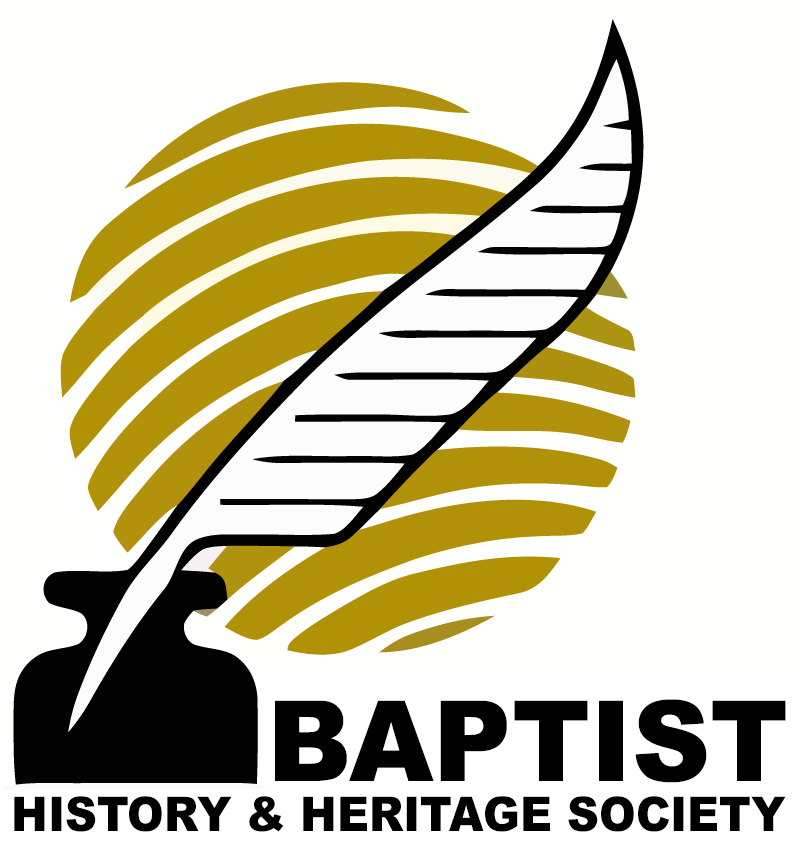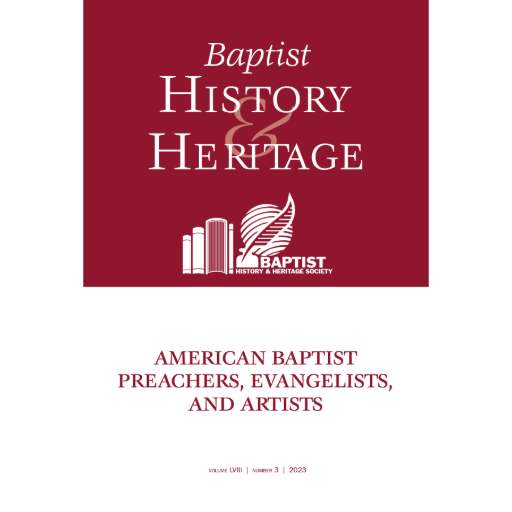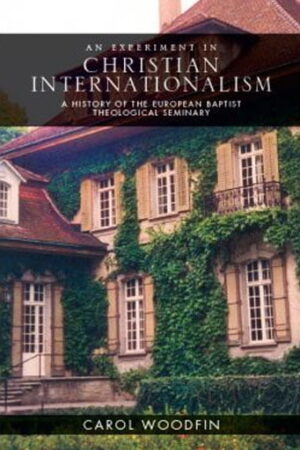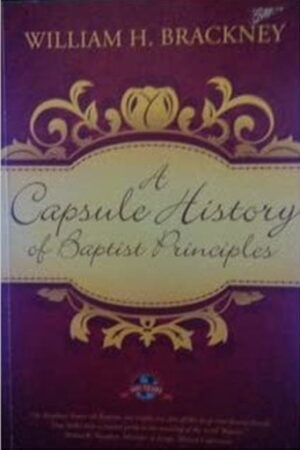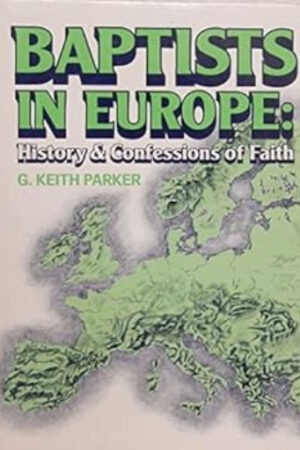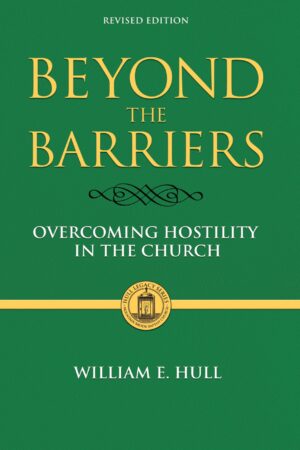Baptist Preachers, Evangelists, and Artists
Original price was: $15.00.$10.00Current price is: $10.00.
(Volume 58, No. 3)
Description
This issue of Baptist History & Heritage highlights the lives and contributions of Baptist leaders and artists across history. Articles explore Elijah Craig, the “father of bourbon,” whose advocacy for religious freedom shaped early Baptist life, and Ida Sherman, a pioneering female evangelist in 19th-century South Dakota. Discover the artistry of Robert Bell, whose illustrations challenged racial injustices, and delve into Howard Thurman’s mysticism and ecumenical impact. Additional articles include George W. Truett’s leadership during WWII and Adam Bond’s reimagining of religious freedom, offering insights into Baptist heritage and its modern implications.
Table of Contents
“Elijah Craig: More than Bourbon” – Joseph Early Jr.
“‘All Barriers Are Broken Down’: The Pastoral Path of Evangelist Ida Sherman Womeldorf” – Lisa R. Lindell
“The Art of Collaboration: Multi-talented Black Baptist Artist Robert E. Bell and the Illustrations for Sutton E. Griggs’ Most Ambitious Novel The Hindered Hand” – John Gruesser
“The Baptist Side of Black Baptist Mystic Howard Thurman” – Wm. Loyd Allen
“George W. Truett During World WWII” – David T. Crum
“Reimagining Religious Freedom: Remarks in the Baptist Joint Committee for Religious Liberty” – Adam Bond
Forging a Christian Order: South Carolina Baptists, Race, and Slavery, 1696-1860 – Reviewed by Andrew Smith
Baptists and Gender: Papers for the Ninth International Conference on Baptist Studies – Reviewed by Christopher Price
Editor’s Note — Dr. Joe Coker, Baylor University
This issue contains articles that focus on individual Baptist pastors, evangelists, and artists, some well known and others more obscure. Chronologically, the earliest of these figures is the subject of Joe Early’s article looking at the early ministerial career of a Baptist preacher who is most famous not for his work in the pulpit but rather for his work as a distiller of alcohol. Known now as the “father of bourbon whiskey,” Elijah Craig started out as a Separate Baptist preacher in Virginia in the years leading up to the American Revolution. Before relocating to Kentucky along with his congregation in 1771, Craig was an outspoken advocate for religious freedom and disestablishment, himself arrested on more than one occasion for preaching without a license. Early pays particular attention to the Separate Baptist beliefs of Craig, including the conviction that a minister should not receive a salary from the church but should instead have a separate vocation for financial support. This theological conviction led Craig to raise tobacco on his farm while in Virginia and to focus his efforts on distilling bourbon whiskey later in Kentucky.
Lisa Lindell introduces us to a heretofore little-known female Baptist preacher and revivalist from nineteenth-century South Dakota. Ida Sherman became popular and well known all across the state as a traveling evangelist in the 1890s. She had a broad appeal and led one successful revival after another before eventually settling into a longer- term pastorate in the town of Deadwood as it became a gold mining boomtown. Lindell’s examination of Sherman’s successful career as an evangelist and pastor offers a fascinating insight into the role of women in Baptist life in the frontier during the era and introduces a name that should be more well known amongst historians of the Baptist movement.
John Gruesser’s article examines Robert Bell, a famous Black Baptist artist from the early twentieth century. The article provides a sketch of Bell’s career as a painter of religious images and scenes from the Bible in local churches, a portrait painter of African American ministers, and later as a well known sculptor. But Gruesser’s main focus is the numerous illustrations that Bell provided for a book by Sutton Griggs, a Black Baptist preacher and author. The book, powerfully illustrated by Bell, was written as a retort to Thomas Dixon’s racist 1902 novel The Leopard’s Spots. These two African American Baptists, as author and illustrator, helped shine a brutal light on the harsh and unjust realities of life in the Jim Crow South at the turn of the twentieth century.
Loyd Allen’s article brings us to a more recent Black Baptist voice who struggled against the racism of twentieth-century America: Howard Thurman. Allen pays special attention to the mystical elements of Thurman’s theology and religious experience. He finds the foundations for Thurman’s life-long focus on inward spiritual experience of the divine was laid in coursework Thurman did as an undergraduate at Morehouse College and then as a graduate student at Rochester Theological Seminary. Allen also reflects on how Thurman carried his Baptist ideals into larger ecumenical conversations and interactions.
David Crum, who has previously written on the experiences of famous Texas Baptist preacher George W. Truett during the first World War, offers us some insight into Truett’s reaction to World War II. He describes how Truett shepherded both his congregation in Dallas and the larger Southern Baptist Convention through the early years of the war until his death in 1944. Crum highlights how the issue of religious freedom, and the threat of its demise if totalitarian regimes were victorious, played a central role in Truett’s vocal support for American participation in the war in Europe.
This issue concludes with some remarks made by Adam Bond to the Baptist Joint Committee for Religious Liberty. In these remarks, Bond highlights the important work being done by the BJC’s Center for Faith, Justice, and Reconciliation. He challenges us to redefine the very meaning of religious freedom in ways that allow for respecting the full humanity of all individuals. He also wrestles with how the work of Baptists and the BJC might help us find constructive ways to promote religious dialogue in the public sphere from a broader coalition of participants.
